Oblique Strategies is a card-based method for promoting creativity jointly created by musician/artist Brian Eno and multimedia artist Peter Schmidt, first published in 1975. Physically, it takes the form of a deck of 7-by-9-centimetre printed cards in a black box. Each card offers a challenging constraint intended to help artists break creative blocks by encouraging lateral thinking.
Generative music is a term popularized by Brian Eno to describe music that is ever-different and changing, and that is created by a system.
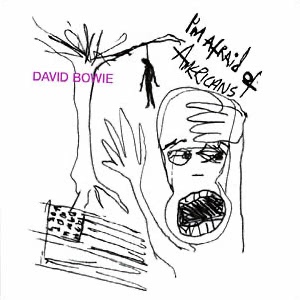
"I'm Afraid of Americans" is a song by the English musician David Bowie, released as a single from his album Earthling on 14 October 1997 through Virgin Records. The song was co-written by Bowie and Brian Eno and originally recorded during the sessions for Bowie's 1995 album Outside; this version was released on the soundtrack of Showgirls (1995). The song was then remade during the sessions for Earthling, featuring rewritten lyrics, overdubs and transposed verses. An industrial and techno track, it presents a critique of America through the eyes of a stereotypical "Johnny" and is characterised by drum patterns, synthesisers, various loops and vocal distortions.

Phillip Geoffrey Targett-Adams, known professionally as Phil Manzanera, is an English musician, songwriter and record producer. He is the lead guitarist with Roxy Music, and was the lead guitarist with 801 and Quiet Sun. In 2006, Manzanera co-produced David Gilmour's album On an Island, and played in Gilmour's band for tours in Europe and North America. He wrote and presented a series of 14 one-hour radio programmes for station Planet Rock entitled The A-Z of Great Guitarists.
The Anti-Group Communications is an open-membership collaborative art and information project formed in 1978 by Adi Newton and Steven Turner. The T.A.G.C. acronym refers to the four different types of DNA Nucleotide: thymine, adenine, guanine, and cytosine. The group's main objective was to combine interactive and mixed media art, installations, and research on psycho acoustics and philosophical concepts to produce fascinating presentations. Although the group disbanded in 1996, Newton continued the project with CD releases and live performances in 2009.
Russell Mills is a British artist. He has produced record covers and book covers for Brian Eno, the Cocteau Twins, Michael Nyman, David Sylvian, Peter Gabriel, and Nine Inch Nails.
801 were an English experimental rock supergroup band, originally formed in London in 1976 for three live concerts by Phil Manzanera, Brian Eno, Bill MacCormick, Francis Monkman, Simon Phillips and Lloyd Watson.
Janek Schaefer is a British avant-garde artist, musician, composer, inventor, and entertainer, known for performing and exhibiting his work around the world with sound and installation art. Schaefer has released 37 albums, runs Lucky Dip Disco, and his own label, audiOh! Recordings.

The Shutov Assembly is the twelfth solo studio album by Brian Eno, released on 10 November 1992 on Opal via Warner Bros. Records. One of Eno's ambient albums, it was reissued in 2014 with a second disc with bonus tracks. It is considered the follow-up to Nerve Net, which was released that same year.

Music for Civic Recovery Centre is the nineteenth solo studio album by Brian Eno, released in 2000. Part of Eno's Quiet Club series of Installations, is Eno's third release that has a sole composition.

Kite Stories is the eighteenth solo studio album from Brian Eno, released in 1999 by Opal Music.
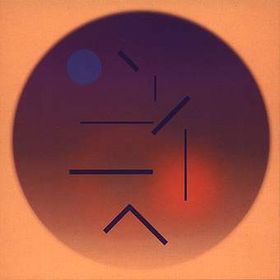
I Dormienti is the seventeenth solo studio album Brian Eno, released in 1999. It is also the title of an art-book by Eno and Italian painter, sculptor and set designer Mimmo Paladino, released in 2000, packaged with a copy of the album and featuring pictures & sketches of the installation from which the music is drawn. The music on the album is taken from an installation that took place at the undercroft of the Roundhouse, Chalk Farm Road, Camden, London, from 9 September to 6 October 1999.
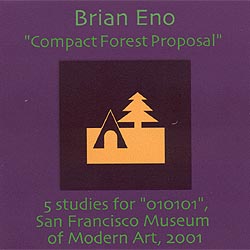
"Compact Forest Proposal" is the twentieth solo studio album from Brian Eno, released in February 2001.

"Lightness" is the sixteenth solo studio album by Brian Eno, released in 1997, and re-released in 2000 by Opal Music. The music on the album was made for an Installation—a show featuring music and visuals—that took place at the Marble Palace in Saint Petersburg, which accommodates permanent exhibitions of the State Russian Museum, from November to mid-December 1997.
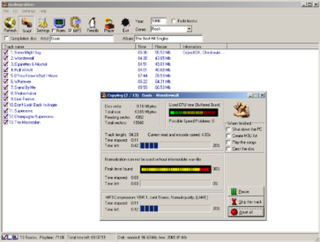
Audiograbber is a proprietary freeware CD audio extractor/converter program for Microsoft Windows. It was one of the first programs in the genre to become popular. The data extraction algorithm was designed by Jackie Franck and was included in the Xing Technology software package Xing Audio Catalyst in the mid-1990s.

77 Million Paintings is a digital art software/DVD combination by British musician Brian Eno, released in 2006.

Brian Peter George Jean-Baptiste de la Salle Eno, also mononymously known as Eno, is an English musician, songwriter, record producer and visual artist. He is best known for his pioneering contributions to ambient music and electronica, and for producing, recording, and writing works in rock and pop music. A self-described "non-musician", Eno has helped introduce unconventional concepts and approaches to contemporary music. He has been described as one of popular music's most influential and innovative figures. In 2019, he was inducted into the Rock and Roll Hall of Fame as a member of Roxy Music.
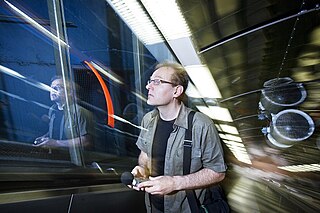
Petri Kuljuntausta is a Finnish composer, musician, sound artist and author of three books on electronic music and sound art. Since the 1990s he has belonged to a new generation of composers in Finland interested in experimental and electronic music.
Max Eastley is a British visual and sound artist. He is part of the Cape Farewell Climate Change project. He studied painting and graphic art at Newton Abbot Art School and then went on to gain a BA in Fine Art (1969–1972) at Middlesex University. He is a sculptor (kinetic), musician and composer. His primary instrument is a unique electro-acoustic monochord, developed from an aeolian sculpture. 'The Arc' consists of a single string stretched lengthwise across a long piece of wood which can be played with a bow, fingers or short glass rods. The end of the instrument has a microphone attached so the basic sound can be amplified, recorded and run through sound effect programs.
Irma is a 1969 experimental opera by artist Tom Phillips, Fred Orton and Gavin Bryars.












